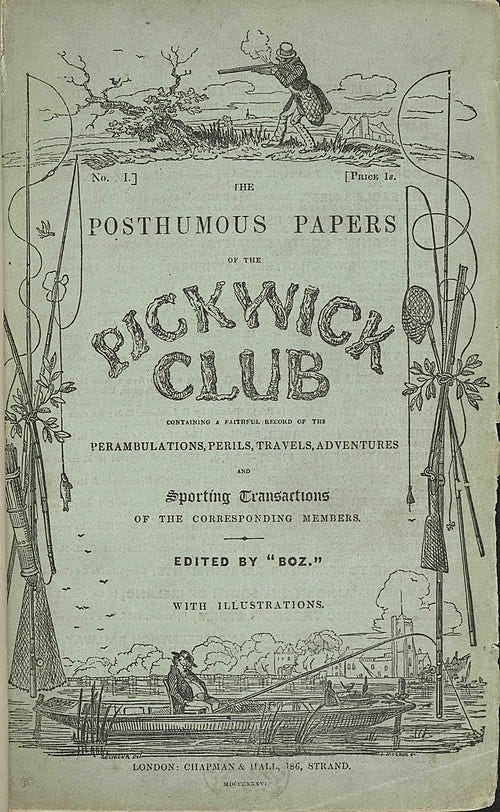Updated 6/29/2025
Serial Minds Edpisodes: #1 ↓↓↓ | #2 | #3 |#4
If you're a fan of stories that hook you from the start and keep you wanting more, you’ll love serial fiction. This form of storytelling is similar to a television series, with an author regularly publishing episodes.
I’m releasing this experimental micro-fiction serial every Tuesday in Notes.
The Deck: The Fool
Today I woke feeling refreshed, something that hadn’t happened in a couple of weeks. I asked the cards for guidance and The Fool made an appearance.
The Fool is a card of new beginnings and brave uncertainty. It urges you to trust your instincts, even if the path isn’t clear.
The Fool leaps without knowing the outcome.
Let curiosity guide you. Allow yourself to take a risk or try something new…
…even if you’re scared of looking foolish.
I must ask myself:
Where do I see the potential to begin again?
What might be possible if I stopped holding back?
What would I do if I trusted the unknown?
You don’t know what you don’t know.
I had no idea serial fiction had been a thing since Victorian times. Rather than wallowing in shame that somehow I’d missed this important part of creative writing history, I did some research and wrote an article.
Of course, I updated it. This post is the update!
You must understand that I have a messy little brain and my creative process is a reflection of what’s happening in the ol’ noggin.
Writing short episodes for a variety of serials keeps me excited and motivated. The thing is…
…sometimes I get impulsive. Thank you, brain.
So, while I don’t often plot ahead, I have learned to always look back.
One of the exciting and difficult lessons in this journey was realizing that people are reading AND sharing my work, and if I randomly decide to move things around, it might affect their work.
It happened recently.
took the time to honor me with a few reviews. One of my favorites is his review of Test Group 1 in issue 13:“Nothing screams “fun” like stealing a nickname from your friend’s dog as you build a false identity for a fun night out.”
Derek’s reviews are kind of like being roasted by your peers. They are nothing like my dry, academic analysis, but that’s what I love about them.
Anyhoo, I’m grateful he let me know the links to my stories were broken because now I know I need to adopt a different approach…
…like making a copy if I want to write a new draft or update the URL…
…and keeping in mind that there is an audience out there reading and even sharing my work. Exciting and terrifying!
I want to honor that.
Until recently, I’ve revised and updated the stories, directly, in the original drafts.
From now on the first drafts will remain where I first publish them.
Moving on…
Get Hooked on Serial Fiction!
Serial fiction includes science fiction, fantasy, romance, mystery, horror, paranormal, and historical fiction.
Like a TV series, episodes usually follow an ongoing storyline. The format is also excellent for anthologies, with separate short stories that play into a larger narrative.
Serial fiction allows writers to experiment with different genres, styles, and themes. Readers get to follow the adventures of their favorite characters for months, and even years.
Substack Serials
Like its predecessors, modern serial fiction allows for the development of complex and immersive characters and narratives. These days, authors can share serialized stories across various media—from posts and podcasts to videos.
Digital media offers engagement and interaction with your audience. Plus, there is freedom to experiment.
It might be the easy accessibility for readers and writers that has elevated serial fiction in recent years. The format is wildly popular on Substack.
That’s what Tome Tuesday is all about
Whether it’s XXX, XXX or XXX XXX (fill in the blanks and comment with your favorites!) there are so many serials getting published on Substack, you’ll never hurt for something to read.
Tome Tuesday Writers
Angela Marrant|
| | | | | | | | | | | | | | | | | | | | | | |
There’s been an influx of well-known authors serializing novels on Substack, too. And many writers, such as Chuck Palahniuk, use the format and platform as a testing ground.
Still, Serial Fiction Is Nothing New
Traditionally, literary magazines, periodicals, and newspapers provided avenues for serial publication.
The format became popular in the 17th Century, catering to a growing demand for reading material among the middle class. Publishers could reduce prices, effectively expanding the market by producing low-cost installments.
The format introduced new forms and styles that appealed to a diverse audience. These stories were entertaining. They offered a way of examining society's values and norms.
Episodic installments allowed time to gauge an author’s popularity before investing in large print runs.
All Aboard
Charles Dickens was one of the most influential authors publishing his novels in serial form.

Dickens used serial fiction to create social commentary while experimenting with different genres and styles. His most famous episodic stories include Great Expectations published weekly from December 1860 to August 1861.
Dickens wasn't the only author who used serial fiction to significant effect. Many other writers followed his example. Wilkie Collins serialized The Woman in White and later one of the first detective novels, The Moonstone, in Dickens's magazine All the Year Round.
French writer Alexandre Dumas released The Three Musketeers in serial form in 1844. The story gained instant success.
Elizabeth Gaskell explored social issues and regional differences between the North and South, and Gustave Flaubert scandalized the public with his realistic portrayal of adultery in Madame Bovary.
Sir Arthur Conan Doyle created the iconic Sherlock Holmes stories for The Strand magazine between 1892 and 1893. Then he killed off the detective and would have been done with it. However, Sherlock Holmes fans took it personally and protested.
In 1902, the author published The Hound of the Baskervilles. A year later, he published The Adventure of the Empty House.
There are 56 short stories and four full-length novels in the Sherlock Holmes adventures.
Meanwhile, In The United States
The format provided a cheap and accessible form of entertainment for the settlers in the Western United States during the 1700s and 1800s.
Laura Ingalls Wilder wrote a series of autobiographical novels based on her childhood experiences as an American pioneer.
Her novels were first published as serials in magazines such as The Saturday Evening Post and McCall's. Some of her most famous works are Little House in the Big Woods, Little House on the Prairie, and On the Banks of Plum Creek.
Willa Cather is a Pulitzer Prize-winning novelist who wrote about the lives of immigrants and pioneers in the American West. Her novels were often serialized in magazines such as McClure's and The Century Magazine.
Cather's stories depict the harsh realities and the beauty of the Western landscape, as well as cultural conflicts and the strength of the human spirit. Some of her most acclaimed works are O Pioneers!, My Antonia and Death Comes for the Archbishop.
Zane Grey was one of the most famous writers of Western novels, many of which were serialized in magazines such as Argosy and Adventure. Grey's stories featured rugged cowboys, outlaws, Indians, and frontier romance. Some of his best-known works are Riders of the Purple Sage, The Lone Star Ranger, and The Last Trail.
James Fenimore Cooper was one of the first American novelists to write historical Fiction. Cooper is best known for his Leatherstocking Tales series, which follows the adventures of Natty Bumppo, a frontiersman who interacted with various Native American tribes.
Graham's, and Putnam's Monthly, serialized Cooper's novels. Some of his most famous works are The Last of the Mohicans, The Deerslayer, and The Pathfinder.
Serial fiction’s popularity spread, with American writers such as Harriet Beecher Stowe, who serialized Uncle Tom's Cabin in 40 weekly installments from 1851 to 1852, via The National Era, an abolitionist weekly published in Washington, D.C.
Mark Twain, Henry James, Edith Wharton, and F. Scott Fitzgerald were major players, too.
20th-Century Authors
By the 20th Century authors such as Isaac Asimov, Edgar Rice Burroughs, Robert Heinlein, and Ray Bradbury, published serials in pulp magazines.
Like many of his peers, Bradbury later compiled the stories into short collections or published them as novels.
Isaac Asimov's I, Robot was initially published in science-fiction magazines between 1940 and 1950 before being published together in book form. In all, there are nine stories.
These tales link through a reporter's interview with Dr. Susan Calvin, a former robo-psychologist who worked with dysfunctional robots. Asimov and his mentor, John Campbell, Jr., developed a set of ethics for robots that are still used today.
Alan Moore published Watchmen from 1986 to 1987. Stephen King, Agatha Christie, John Updike, and Tom Wolfe continued the serial fiction tradition.
Stephen King published his supernatural serial thriller, The Green Mile, in six monthly paperback installments from March to August 1996.
King set his story in a small Southern prison, Cold Mountain Penitentiary, in 1932. Paul Edgecombe, the former block supervisor, narrates as an older man looking back on the events.
As with many other serial novels on this list, the story eventually became a movie adaptation, in 1999.
Sharon Stories - First Draft Fiction
I write first-draft serials on Substack, approaching the platform as an opportunity to experiment.
My current serials include:
The Truth About Sadie Wilkins
The Shift
Opt-In
I’m almost finished updating the Opt-In Substack, where you’ll find an anthology of tech horror stories connected by the OG AI that I introduced in SŌSH. Once the Opt-In Substack is ready, I’ll add the link to The Library.
P.S. I’m leaving the previous versions intact, URLs, and all.
The Ninth Harmonic
Multi-media story development, combining text, images, and audio presented in a nonlinear format as different entry points into the fictional world.
That's it for now!
If you enjoy my work, here’s how you can support me.
Share it!
If you don’t want to commit to a paid subscription…











I'm happy to update the old links in DREAD if you supply them with a label of where they should go!